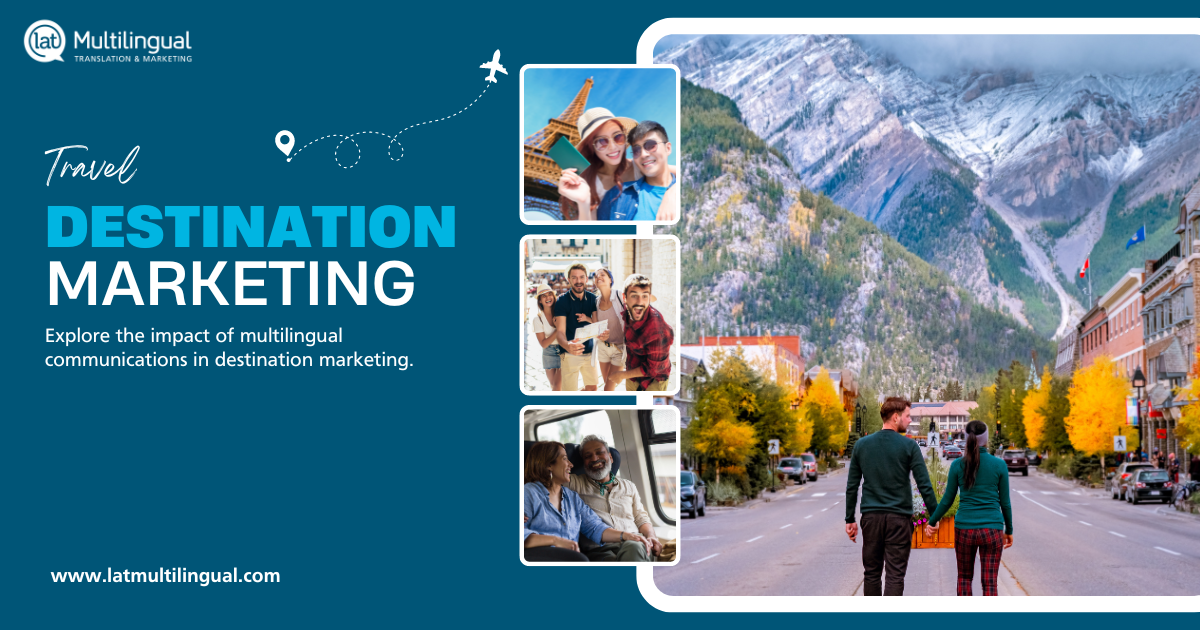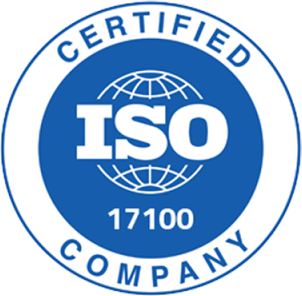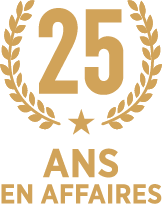Travel has surged after the pandemic, creating great potential for destination marketing campaigns. However, there are more options for travellers as well – and with increased competition, it is more important than ever for destination marketers to effectively reach their target audience.
To reach a diverse population in Canada and the US, a multilingual approach is essential, especially as Canada’s immigrant population continues to grow.
In Q3 2022 alone, Canadians spent a whopping $27.3B on domestic trips! (source)
A well-planned campaign in the language of each target audience you want to reach will lead to increased bookings and revenue.
Although English and French are the official languages in Canada, the 2021 census showed that nearly 5 million Canadians use a language other than English at home.
Translation and localization must be an integral part of your destination marketing strategy.
Destination marketers often try to appeal to everyone with messaging that conveys “a lot to offer” or “everything for everyone”. However, audiences that have niche interests are more likely to engage with your website if you create content in their native language, especially if it is tailored to their culture as well.
For example, many Chinese-Canadian tourists look for cultural and culinary experiences, outdoor activities, and relaxation opportunities. On the other hand, South Asian tourists in Canada are usually interested in breathtaking natural landscapes along with activities that cater to all members of their travel group. Canadian Muslim travellers may seek halal food options and prayer facilities.
To achieve success in domestic destination campaigns, being mindful of cultural nuances is key to reaching target audiences.
Learn how LAT partnered with the Tourism Industry Association of New Brunswick to help tourism partners better understand Chinese visitors’ cultural preferences and adapt their services accordingly.
In this blog post, we will explore the top 3 tips for multilingual communications for destination marketing and excellent examples from Destination Ontario and Bonjour Québec.
1. Speak the language of your target audience with translated content.
Translating marketing content across the entire customer journey can have a significant impact on your bottom line. If your website is difficult to read and understand, potential tourists may hesitate to book their travel. Even if your audience is fluent in English or French, they would still prefer information in their own language.

Despite the plethora of options for machine translation tools, most aspects of destination marketing and advertising require a human linguistic professional’s expertise to avoid costly misunderstandings. It also keeps your brand messaging authentic while maintaining its quality.
Travel content that requires cultural and linguistic adaption includes:
- Destination descriptions
- Social media posts
- Marketing and advertising content (brochures, manuals, itineraries, etc.)
- Podcasts in native languages
However, you don’t need to translate into every language to benefit from this approach. You can effectively reach a majority of the multicultural population by translating your content into 12 or 13 key languages.
2. Make your social media platforms multilingual for better engagement.
Your social content has even more power to build engagement when it is multilingual and localized to your target audience. While most cultures use some form of social media, their preferred platforms and methods of engagement differ – meaning if your content isn’t localized, you may only be reaching a fraction of your potential audience. By using your customer’s own language, you can demonstrate that your services are designed to be accessible to them.
Here are a few ways to optimize your social media to reach a more diverse audience:
- Use localized social posts, tweets, and pins, just like localized websites, to boost sales. You may also want to consider the popularity of different social media channels among your different target groups. For instance, you are more likely to capture Chinese consumers in North America if you reach out to them via WeChat, RED, TikTok, etc. while Quebecers would be more reachable on Facebook and through podcasts.

2. Collaborate with influential social media personalities, or community leaders from various cultural backgrounds. These influencers can promote your destinations to their respective communities, establishing trust and interest. This South Asian influencer promotes various restaurants and travel destinations in Canada with South Asian music and the “Hinglish” language.

3. Actively engage with social media groups, forums, and communities that cater to the multicultural population in Canada.
4. Seek user-generated Content (UGC) by encouraging travellers from various cultural backgrounds to share their travel experiences at your destinations in their native language using branded hashtags.

5. Create virtual tours of your destination narrated in different languages. Use interactive elements to allow users to choose their preferred language and explore the location virtually.
These are just a few of the many ways it is possible to create social media that reaches the groups you’re targeting.
3. Take your marketing to the next level with multilingual SEO.
Now that your website has a good search ranking in English, have you considered how it performs in other languages? Simply translating your content into other languages will not guarantee the same level of search engine optimization as in English.
In a multicultural marketing campaign, SEO too should be localized.
English keywords may not mean the same thing in other languages, so direct translations may not produce optimal keywords. That means that SEO strategies and mechanics vary across languages to identify what keywords people will use to search for your brand in their own language.
Also, brands that focus on a niche market are likely to enjoy higher visibility. There is less competition among niche keywords compared with those that are relevant to a mass audience.
For example, if you compete against other destination marketers for the generic keywords “summer holidays in Canada”, you may face an uphill battle as your competitor would also be using those common keywords. However, if you compete for the niche and specific keyword “Chinese bus tours from Toronto”, you will face less bidding competition.
This is just an example in English. Imagine the potential consumers you would attract if the same SEO strategy were applied in different languages.

A dedicated multilingual SEO strategy can help you determine the best keywords.
Let’s take a look at a few organizations that have nailed multilingual destination marketing and are attracting domestic tourists to their provinces.
Success story #1 – Multilingual destination marketing in Ontario
Ontario is a diverse province with a population that speaks many languages. Ontario’s tourism industry recognizes this and has made an effort to incorporate multilingual marketing strategies.
For instance, Destination Ontario, the official tourism website of Ontario, is available in French, Spanish, German, Japanese, Korean, and Chinese, among others. It helps Canadian travellers from different cultures navigate the website and plan their trips more easily.

The description says “Visit Ontario, Canada!

The description says “Plan your Ontario adventure”
Moreover, many tourism businesses in Ontario offer multilingual services to cater to their non-English-speaking visitors. For example, some hotels and restaurants display their menus in various languages, while many tour operators provide guides who can speak different languages.

A menu card of a restaurant in Richmond Hill, ON

An Instagram story of a Latin Bar in Toronto, Ontario
Other than English and French, the most commonly spoken languages in Ontario are Mandarin, Cantonese, Italian, and Punjabi. By incorporating these languages into tourism marketing materials, Ontario’s tourism industry has reached out to a broader audience and increased the number of visitors.
Here’s another convincing example of an advertisement from Ottawa Tourism that connected with the Korean community:
Success story #2 – Quebec: A model for multilingual destination marketing
Quebec has set an example for other destination marketers with its successful multilingual marketing efforts. With its stunning landscapes and vibrant culture, the Laurentians attract visitors from across the country.
The efforts have paid off with an 85% to 90% occupancy rate in hotels. By catering to a diverse audience, the region has positioned itself as an inclusive and welcoming tourist destination.
Bottom line:
- If your website is difficult to read and understand, potential tourists may hesitate to book their travel. Even if they are fluent in French, they still prefer information in their own language.
- You can effectively reach a majority of the multicultural population by translating your content into 12 or 13 key languages.
- Translations do require a human touch to ensure accuracy, genuineness, and quality.
- Search engine optimization is crucial for destination marketing, but the strategies and mechanics vary across languages. Search engines and keywords will not be the same in all languages.
- While social media engagement is prevalent in most cultures, the preferred platforms and methods of engagement differ.
Reach more visitors with our multilingual destination marketing solutions
If you’re a business owner or marketer in the tourism industry, you need to incorporate diverse languages in your marketing plan. Canada is a mosaic of different communities and cultures. Are you adapting your tourism marketing content to reach a wide audience?
Multilingual marketing plays a vital role in communicating with potential customers in their native language, with more personalized content that leads to increased bookings and revenue.
Looking to expand your reach to multicultural travellers? We can help with our multicultural marketing expertise. Get in touch to learn more!















